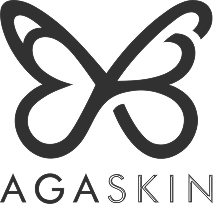The 5 Biggest K-Beauty Myths (And What’s Actually True)
K-Beauty is more than sheet masks and 10 steps. It’s time to unlearn the myths.
Korean beauty has become a global skincare standard—but with popularity comes misunderstanding. You’ve probably heard a few things like “K-Beauty is only for women,” or “It’s all about trends.” These K-Beauty myths not only oversimplify an incredibly diverse space—they stop people from discovering what K-beauty can actually do.
So let’s clear the air. Whether you’re new to Korean skincare or a longtime fan, this post separates fact from fiction—so your next skincare decision is based on truth, not TikTok.
Myth 1 – “K-Beauty Is Only for Pale, Glass Skin Goals”
This is one of the most harmful K-Beauty myths still circulating.
Truth: K-beauty isn’t about whitening—it’s about brightening, evening tone, and restoring barrier health. The term “whitening” is often a mistranslation used to describe ingredients like niacinamide and licorice root, which fade dark spots and reduce inflammation—not bleach skin.
Modern K-beauty brands, especially those we stock at AGASKIN, are actively expanding:
- Shade ranges
- Inclusive campaigns
- Melanin-safe formulations
✨ Korean beauty routines focus on health and radiance—not conformity.
✨ At AGASKIN, we only work with brands committed to global skin equity.
Myth 2 – “You Need a 10-Step Routine”
A classic Korean skincare misconception? That more = better.
Truth: K-beauty is about customization and ritual, not excess.
The original 10-step routine was never meant to be mandatory—it was designed to showcase the range of options available, not a requirement.
K-Beauty routines today are typically 3–5 steps, and personalized based on:
- Skin type
- Season or climate
- Time of day
- Current skin state
💡 Want to simplify yours? Start here: How to Build a Realistic 3, 5 or 7-Step Routine
Myth 3 – “K-Beauty Is Only for Women”
One of the most outdated myths in the book.
Truth: In Korea, skincare is genderless. It’s a form of self-respect—not a beauty performance.
At AGASKIN, we see clients of all genders who:
- Struggle with skin or scalp imbalance
- Want non-irritating makeup
- Are building confidence through care
✨ Skin isn’t gendered. Ritual isn’t either.
Myth 4 – “K-Beauty Doesn’t Work for Darker Skin Tones”
Let’s get this straight.
Truth: Korean skincare is often ideal for melanin-rich skin due to its barrier-first approach, anti-inflammatory ingredients, and gentle brightening agents.
K-Beauty focuses on:
- Even tone, not tone-erasing
- Hydration-first formulas
- Minimal irritation, which reduces PIH (post-inflammatory hyperpigmentation)
The real issue? Shade ranges in makeup can still be limited. But skincare? It’s inclusive by design.
Myth 5 – “K-Beauty Is Just a Trend”
Nope. It’s a global leader in skin innovation.
Truth: South Korea’s beauty industry is backed by rigorous R&D and ingredients like:
- Centella asiatica
- Snail mucin
- Fermented rice
- Ginseng and mugwort
These aren’t trends—they’re generations-old tools, now refined for today’s skin needs.
Final Thought: K-Beauty Is Yours to Define
You don’t need to follow all the steps. You don’t need to fit a type. The best Korean beauty routine is the one that supports you.
✅ Simplified or layered
✅ Bold or subtle
✅ All skin tones and textures welcome
💬 FAQs About K-Beauty Myths
Is “whitening” in K-beauty the same as bleaching?
Are there Korean skincare products that cater to darker skin tones?
Can I build a K-beauty routine with just 3 products?
Does K-beauty work for acne-prone or oily skin?
🧡Build a Ritual That Reflects You
Let’s build your ritual—not your regimen.
👉 Book a 1:1 Ritual Consultation
👉 Explore Our Beginner-Friendly Skincare Picks
👉 Read: What K-Beauty Actually Means

